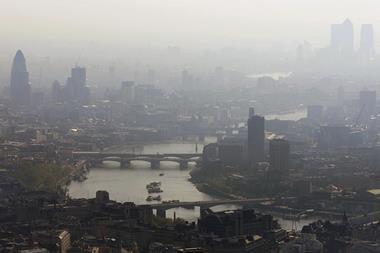Overusing household cleaners may reduce indoor air quality

The air in some UK homes contains potentially harmful levels of volatile compounds due to residents overusing household chemicals without proper ventilation, new research shows.
Air quality research tends to focus on the outdoors. However, with homes becoming more insulated and energy efficient, and with people spending more time indoors, it’s worthwhile studying this air too.
Alastair Lewis’ team at the University of York and colleagues at King’s College London have measured the concentration of gaseous organic compounds in 25 UK homes to see how occupants’ activity can affect indoor air quality.
Some homes had surprisingly high levels of monoterpenes, in particular α-pinene and D-limonene, which originate from plants, food, fragranced household products and cleaning materials. These levels appeared to be strongly linked to the behaviour of the people in the house; the residents of the property with the highest concentrations reported using nine different cleaning products on more than ten occasions over a week. A previous study found that the average concentration of D-limonene in UK homes was around 6.2μg m–3, while in this home the mean concentration was 807μg m-3.
‘This study is not about demonising a particular class of chemical or product … but there is perhaps a very small minority of people who live in modern airtight homes, and who really do need to read the instructions [on cleaning products], and perhaps this is something manufacturers can actively address,’ comments Lewis.
Charles Weschler of the Environmental and Occupational Health Sciences Institute at Rutgers University, US, says, ‘exposure to these pollutants is a matter of personal choice, unlike outdoor air pollutants.’ Meanwhile, Linsey Marr who studies air quality at Virginia Tech, US, suggests that the effects of these monoterpines could be seasonal: ‘These two compounds [α-pinene and D-limonene] by themselves are probably not harmful to health at these levels, but they can undergo reactions with ozone, which is more prevalent during the summertime, to form formaldehyde and fine particles, which do have adverse health effects.’
The team now want to expand the study to around 500 homes to obtain further meaningful results.
References
This article is free to access until 13 April 2017
C M Wang et al, Environ. Sci.: Processes Impacts, 2017, DOI: 10.1039/c6em00569a












No comments yet